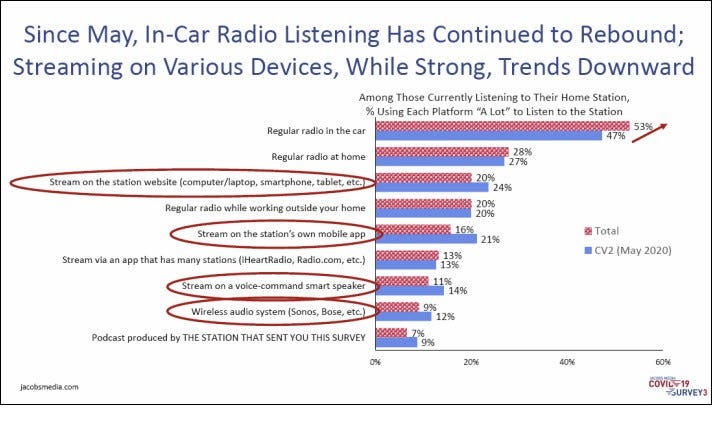Three Things for the week of October 12
Three items from journalism, media and the nonprofit sector worth noting.
Nearly one-third of journalists said they are relying more on government and official sources while covering the pandemic, 46% said politicians and elected officials were one of the top sources of disinformation. That’s one of the takeaways from Journalism and the Pandemic Project, which released its first report detailing the challenges facing journalists during COVID-19.
The safety and well-being of journalists was also noted as a major industry challenge as well as near three-quarters of those responding rated the psychological and emotional impacts of dealing with the COVID-19 crisis as the most difficult aspect of their work, and 82% reported at least one negative emotional or psychological reaction as a result of the pandemic.
Even more disturbing is that more than a quarter of the respondents said their news organizations had not supplied a single piece of protective equipment for field reporting and that 1 in 5 said their experience of online abuse, harassment, threats or attacks was “much worse than usual.”
The International Center for Journalists released the report.
There may be some hope that listening to broadcast radio is recovering some its loss from the change in routines brought on by the pandemic earlier this year. Jacobs Media released the results of a survey this week of more than 27,000 core radio listeners from 355 U.S and Canadian commercial radio stations in late September.
As noted in the graphic below, there was a 6% increase in the number of people listening to “regularly radio in late September 2020 in comparison to May 2020.
In addition to tracking listening habits, the survey focused on how those consumers would be spending money during the holidays. Of note to local retailers was that 2/3 of those responding say they’ll do at least half of their holiday shopping online this year, especially millennials and Gen Xers. The survey was commissioned by the Radio Advertising Bureau.
Consultant Alex Counts had a post last week in the Stanford Social Innovation Review on three types of nonprofit governing boards that are problematic for the organizations they are appointed to govern.
Counts identifies the three types of unsuccessful boards and shares ideas for restoring effectiveness in the post. The three types are:
Rubber Stamp Board. This type of board approves whatever management proposes and often plays the role of cheerleader. These organizations tend to be run by charismatic chief executives who value their autonomy and assemble a board with the expectation that its members are compliant and mainly serve as “window dressing” to reassure external stakeholders.
Micromanaging Board. This board takes on key management functions in addition to its proper governing role. The staff becomes disempowered and often passive (or passive-aggressive) in the face of repeated intrusions into what they rightfully expect would be their areas of authority.
Balkanized Board. These boards consist of people who are concerned about only one part of the organization — often the program they support financially. They typically avoid trying to see how all the pieces of an organization fit together, leaving that task solely to the chief executive. The fragmentation can be dangerous when an organization’s revenues shrink and priorities must be reevaluated quickly and holistically.
In addition, Counts also notes that a “lack of diversity often compounds dysfunction.”
Counts, an adjunct professor of public policy at the University of Maryland, a nonprofit consultant, and writer, notes that building and sustaining high-functioning governing bodies is arduous, time-consuming work, but it’s worth the effort.



